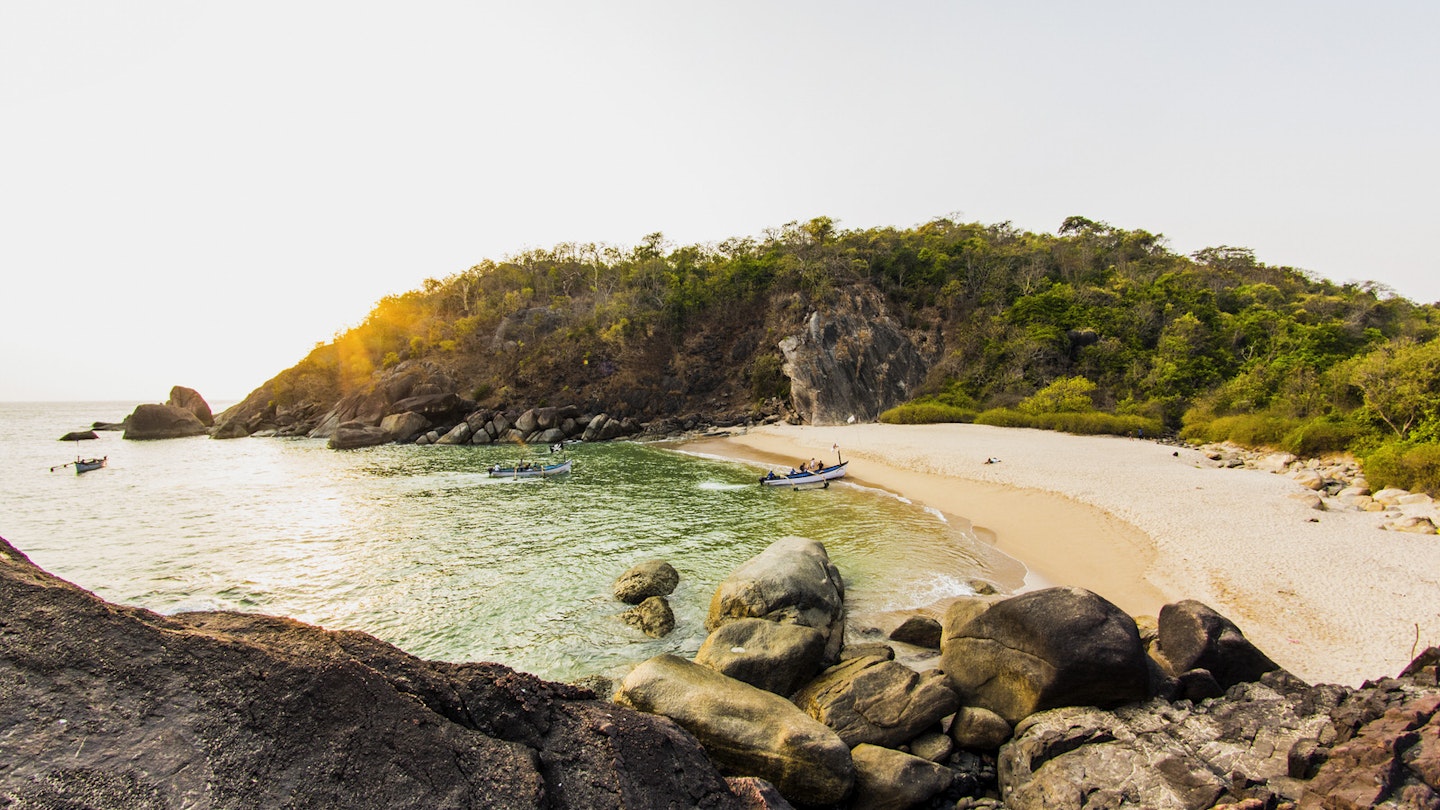Discover 5 Wild Beaches Around the World
For many, a day at the beach wouldn’t be the same without a sun lounger and parasol; the ice cream stalls, volleyball courts, and the steady stream of vendors peddling counterfeit sunglasses. However, for some, these elements are to be endured rather than enjoyed. If you belong to the latter category, consider seeking out a wild beach on your next trip. Alongside alluring rural surroundings and usually thinner crowds, these isolated coves often require an adventurous journey to reach them, whether trekking through dense jungle, steering a kayak through a tidal tunnel, or driving a 4WD—adding to the overall fun.
To get you started, here are five of our favorite wild beaches from around the world, along with details on how to reach them.
Refuge Cove, Wilsons Promontory, Australia

A peninsula jutting into the Bass Strait at the tip of southern Australia, Wilsons Promontory is the kind of rugged, windswept terrain you’d least expect from down under. Yet, its golden white sands are unmistakably Aussie, albeit with a more castaway feel.
The Prom, as locals fondly call it, boasts only one campsite accessible via road. Consequently, reaching the area’s best beaches, including resplendent Refuge Cove, requires long, half-day hikes through thick jungle, with the option for an atmospheric overnight camp in the bush. While this may sound like a lot of effort for a day at the beach, one look at Refuge Cove makes it all feel worthwhile. Revive weary limbs on this narrow dash of white sand—once used as an anchorage for sailors seeking respite from hazardous storms—and paddle in the creek that curls inland through lush greenery; there’s also a small campsite available for those wishing to spend the night.
Best time to go: Avoid the summer holidays from mid-December to early February, as The Prom is a popular family vacation spot. Reservations are recommended for accommodation.
La Playa del Amor (Hidden Beach), Puerto Vallarta, Mexico

On the uninhabited Marieta Islands (an archipelago in Banderas Bay, Mexico), a perfectly circular, otherworldly giant hole in the grassy hilltop contains a pristine beach. While it may currently appear as an incredible natural feature, the formation was actually man-made—a surprising result of the government testing explosives in the region during the early 1900s.
Access to these protected islands from the mainland is via boat, which can be organized by a handful of licensed providers. Once there, visitors must rent kayaks from local tour operators or swim through a 15m-long tunnel at low tide to reach the hidden beach. Be sure to watch out for the striking, aptly named blue-footed booby, as their breeding grounds are nestled on the islands.
Best time to go: The beach is closed to the public on Mondays and Tuesdays. October offers the best weather for snorkeling, while early December allows you to join local processions and music at the Festival of the Virgin of Guadalupe in Puerto Vallarta, which serves as a launch point to the islands.
Butterfly Island, Goa, India

The only way to reach this jungle-clad beach is via a hearty two-hour hike or by boat for a more serene approach. The beaches at Agonda and Palolem are beautiful stretches of sand, popular with locals and tourists alike. To escape the crowds, simply call on a local fisherman to sail you to ‘Butterfly Island.’
Indeed, the crescent curve of burnt orange sands and lush forests give this beach the essence of a faraway, paradisiacal atoll, although this ‘island’ is in reality a secluded cove on the mainland between two popular tourist spots. Just remember to bring plenty of water, some ice-cold Kingfisher Beer, and fresh Goan snacks from a local bar, then unwind in your tropical retreat with only passing dolphins for company.
Best time to go: Avoid the day-long downpours during the monsoon months from May to September, and aim to arrive at the beach during sunset for the most picturesque golden vistas.
Carova Beach, North Carolina, USA

Buckle up for a shoreline that can only be accessed by hiring a 4WD. Carova is the northernmost beach on the Outer Banks—a thin stretch of land off the coast of North Carolina. Accompanied by wild horses and other four-wheeled adventurers roaming the almost deserted beach, this coastal drive is unparalleled.
North Carolina’s Highway 12 merges into the sand via a ramp, allowing you to meander along the 13km beach parallel to the sea towards Carova. Find a private spot to park and breathe in the Atlantic air. If you have the energy, surfing or bodyboarding are great options, or you could simply enjoy a windswept walk.
Best time to go: Given the limited nearby neighborhoods, holiday rental homes can fill up quickly. The shoulder season—months on either side of June, July, and August—typically sees fewer visitors.
Anse Source d’Argent, La Digue Island, Seychelles

This isn’t your typical tropical hideaway; you must trek through a vanilla and coconut plantation to reach these pink-hued shores in the Seychelles. The entrance to the L’Union Estate costs 100 Seychelles Rupees (approximately £6) but is well worth the visit prior to heading to the sands. Here, you can see how copra (dried coconut kernel) is produced at an on-site mill and visit a cemetery where the island’s first settlers are buried.
When the heat begins to feel overwhelming, head towards the giant rock formations to discover picture-perfect Anse Source d’Argent. Composed of weathered granite boulders nestled within rosy sands overlooking crystalline waters, snorkeling here offers the chance to view giant tortoises gliding by. Once you’ve reached this seaside paradise, you’ll likely never want to leave.
Best time to go: Visit in June or September for favorable conditions and lower rates. Consider bringing water shoes for climbing over rocks when snorkeling or swimming at high tide.





